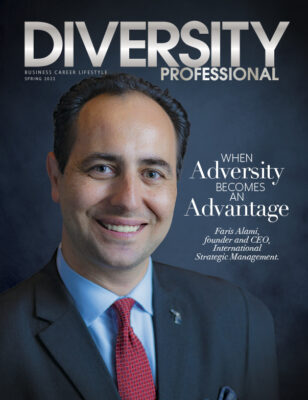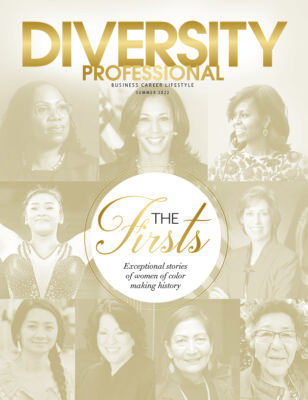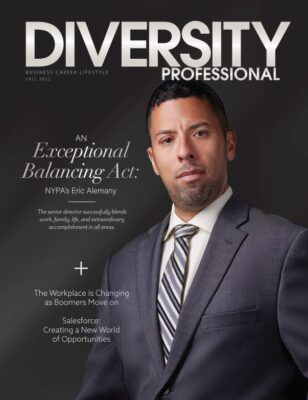Leadership And Diversity: It Starts In The Classroom
Leadership in business starts in the classroom, long before it is exercised in the boardroom. But when it comes to diversity, our nation’s higher education faces a leadership gap, similar to that in the boardroom, and both must be closed. The college classroom is where tomorrow’s leaders—today’s students—are inspired, motivated, educated and prepared for careers.
Hiring managers at most major companies will tell you, unfortunately, that the young talent pool coming out of colleges, today, is not as diverse as they would like it to be. Across all business disciplines, and in academia, there is a collective agreement: our country needs more African-Americans, Latinos and Native-Americans to study business and similar professions. With today’s global marketplace, and our increasingly multicultural domestic footprint, there are lucrative career opportunities awaiting business graduates. Companies know that a diverse workforce produces a diversity of ideas and a level of innovation that will outpace its competitors.
We see the concern over the lack of diversity in many fields beyond the realms of business and accounting. The technology sector, specifically companies like Intel, have invested millions in their diversity and inclusion efforts intended to increase the number of minorities and women among their ranks. The entertainment industry has seen a very slow increase of African- Americans in lead roles, to include Oscar nominees and winners.
The reasons that too few minorities attend business or professional schools are complex, extensive and often deepseated. Resolving some of them will take concerted efforts at the primary and secondary education levels, and in communities.
Studying this problem of under-performance has morphed into solving the diversity problem.
But one reason is staring us in the face, and it can be fixed in years, not decades or centuries. When young African- American, Latino or Native-American students visit a college campus and its business school, they see virtually no one in front of the classroom who looks like them. The silent, but inescapable message—“This isn’t a place for you.”
Research has found that minority students do not perform up to potential when the environment is uncomfortable or unfavorable for them to flourish. Often few, if any, minority faculty or administrators are present and available for students to connect with. Dr. Claude Steele, provost at the University of California-Berkeley, has said, “Studying this problem of under-performance has morphed into solving the diversity problem.”
Over the past two years, several prominent universities have announced diversity initiatives that include substantial funding for recruiting minority faculty. While the intent of these efforts is laudable, their impact is limited to a small number of institutions, and their gains come at the expense of the colleges and universities they are hiring faculty away from.
For those fortunate enough to learn or teach at one of the aggressively hiring colleges, this is a great move. But what about the hundreds of other U.S. colleges and universities from which African-American professors will depart, without being replaced, to accept new job offers?
That’s the problem with these otherwise laudable “go-it-alone” diversity recruitment efforts—they create a zero-sum game.
Our higher education system needs a coordinated, nationwide approach to achieving more diversity at the front of all college classrooms. We need a comprehensive effort by colleges working together to attract, encourage and support African-Americans, Latinos and Native-Americans to become the professors who will attract and sustain the next generation of minority undergraduates. Then comes another daunting task—mentoring and encouraging those future professors through the arduous process of securing credentials and finding employment within faculties.
I know it can be done. For more than 20 years, my organization has run an initiative that has literally changed the face of one slice of academe—business schools.
With the help of others, we started The PhD Project in 1994. There were only 294 African-American, Latino and Native-American business faculty combined, in the entire country. Several leading universities had none. Today, that number has more than quadrupled to 1,409.
Our PhD Project professors are now deans, department chairs, tenured faculty and respected professors. Extensive anecdotal evidence shows that our ultimate goal is being achieved—undergraduates are benefiting immeasurably. Countless testimonials have told us of undergraduate careers salvaged or enhanced, career opportunities created, and doors opened. Undergraduates invite our professors to their weddings, introduce them to parents as “the professor who changed my life,” and even name their children after them.
Yes, it’s true that business schools have advantages some disciplines may not, however there are corporations eager to hire the students of color they produce, and they compensate them well.
For that reason, the business community has steadfastly funded programs like ours that can improve the recruitment and preparation of minority business students. Employers and organizations with similar interests in creating a more diverse undergraduate pipeline also back disciplines such as law, medicine, science and engineering. Those groups can and should partner with the academic community on programs, including minority faculty recruitment, that pursue this goal.
Virtually, any academic discipline can partner with its natural allies and do as The PhD Project has done—market an academic career in a particular discipline, introduce potential professors to university programs where they will study, and then pre-qualify, prepare and support them as they earn their academic credentials.
Such a systemic approach to improving workforce diversity starts in the classroom, but industry, business and the professions are where the ultimate outcomes lie. These sectors too must adapt broader methodologies.
Yes, it takes money. But, with employers and academia increasingly working to improve undergraduate diversity, it is reasonable to expect an increased financial commitment to achieve goals.
If five colleges, alone, could direct $300 million to their diversity efforts, imagine what the entire country could accomplish if it were to truly embrace the notion of a more inclusive, more successful educational experience for the millions of minority undergraduates who yearn for it.









